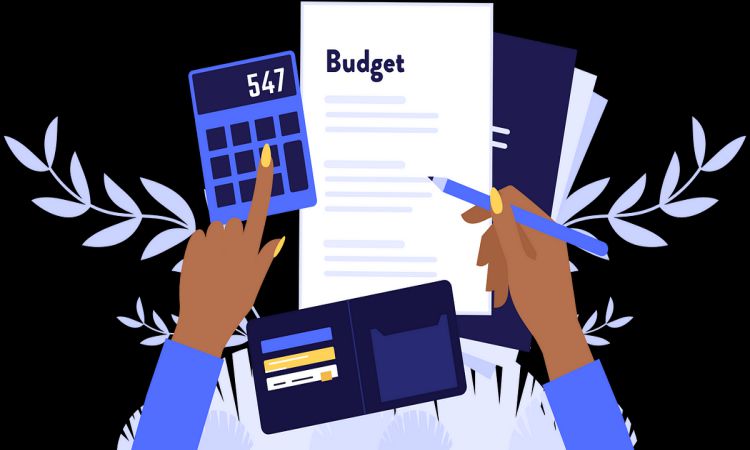Effective budgeting is the cornerstone of sound personal finance management. It enables individuals to prioritize their spending, save for the future, and achieve their financial goals. In this article, we will delve into the world of budgeting, exploring the fundamental principles, benefits, and practical tips to help you take control of your finances.

Understanding the Importance of Budgeting
Budgeting is the process of allocating your income towards various expenses, savings, and debt repayment. It helps you track your spending, identify areas of waste, and make informed decisions about how to use your money. By creating a budget, you can:
- Prioritize your spending: Allocate your money towards essential expenses, such as rent/mortgage, utilities, and groceries.
- Save for the future: Set aside funds for short-term and long-term goals, like emergency funds, retirement, and major purchases.
- Manage debt: Pay off high-interest loans and credit cards, and avoid accumulating new debt.
- Build wealth: Invest in assets that appreciate over time, such as stocks, real estate, or a small business.
The 50/30/20 Rule
A simple and effective budgeting framework is the 50/30/20 rule. Allocate:
- 50% of your income towards necessary expenses, such as:
- Housing (rent/mortgage, utilities, maintenance)
- Food and groceries
- Transportation (car loan/lease, insurance, gas)
- Minimum debt payments (credit cards, loans)
- 30% towards discretionary spending, such as:
- Entertainment (dining out, movies, hobbies)
- Travel
- Personal expenses (clothing, accessories, gadgets)
- 20% towards savings and debt repayment, such as:
- Emergency fund
- Retirement savings
- Paying off high-interest debt
Practical Budgeting Tips
- Track your expenses: Monitor your spending for a month to understand where your money is going.
- Create a budget plan: Use a spreadsheet, budgeting app, or simply a notebook to outline your income and expenses.
- Set financial goals: Identify short-term and long-term objectives, such as saving for a down payment on a house or paying off credit card debt.
- Prioritize needs over wants: Distinguish between essential expenses and discretionary spending.
- Automate your savings: Set up automatic transfers from your checking account to your savings or investment accounts.
- Review and adjust: Regularly review your budget to ensure you’re on track to meet your financial goals and make adjustments as needed.
Managing Debt
Debt can be a significant obstacle to achieving financial stability. To manage debt effectively:
- List your debts: Identify all your debts, including credit cards, loans, and mortgages.
- Prioritize high-interest debt: Focus on paying off high-interest debts, such as credit card balances, as soon as possible.
- Consider debt consolidation: If you have multiple debts with high interest rates, consider consolidating them into a single loan with a lower interest rate.
- Pay more than the minimum: Paying only the minimum payment on your debts can lead to a longer payoff period and more interest paid over time.
Building an Emergency Fund
An emergency fund is a crucial component of a sound financial plan. It provides a cushion in case of unexpected expenses, such as car repairs or medical bills. Aim to save:
- 3-6 months’ worth of expenses: This will provide a sufficient buffer to cover essential expenses in case of an emergency.
- Keep it liquid: Store your emergency fund in a easily accessible savings account, such as a high-yield savings account or a money market fund.
Investing for the Future
Investing is a key aspect of building wealth over time. Consider:
- Retirement accounts: Utilize tax-advantaged retirement accounts, such as 401(k) or IRA, to save for your golden years.
- Diversify your portfolio: Spread your investments across different asset classes, such as stocks, bonds, and real estate, to minimize risk.
- Start early: The power of compound interest can help your investments grow significantly over time, so start investing as soon as possible.
FAQs
- What is the best budgeting app?
There are many excellent budgeting apps available, including Mint, You Need a Budget (YNAB), and Personal Capital. Choose one that suits your needs and preferences.
I review my budget?**
Review your budget regularly, ideally every month, to ensure you’re on track to meet your financial goals and make adjustments as needed. - What is the difference between a budget and a spending plan?
A budget outlines your projected income and expenses, while a spending plan details how you intend to use your money. - Can I still enjoy my life while budgeting?
Absolutely! Budgeting is not about depriving yourself of enjoyment, but about making conscious financial decisions that align with your values and goals. - How can I avoid overspending during holidays and special occasions?
Set a budget for gifts, entertainment, and other expenses, and stick to it. Consider alternative ways to celebrate, such as homemade gifts or potluck dinners.
Conclusion
Mastering the art of budgeting is a crucial step towards achieving financial stability and success. By understanding the importance of budgeting, following the 50/30/20 rule, and implementing practical budgeting tips, you can take control of your finances and build a brighter financial future. Remember to regularly review and adjust your budget, manage debt effectively, and prioritize saving and investing for the future. With discipline, patience, and the right mindset, you can achieve your financial goals and enjoy a more secure and prosperous life. Start your budgeting journey today and take the first step towards financial freedom!
Closure
Thus, we hope this article has provided valuable insights into Mastering the Art of Budgeting: Essential Personal Finance Tips. We thank you for taking the time to read this article. See you in our next article!